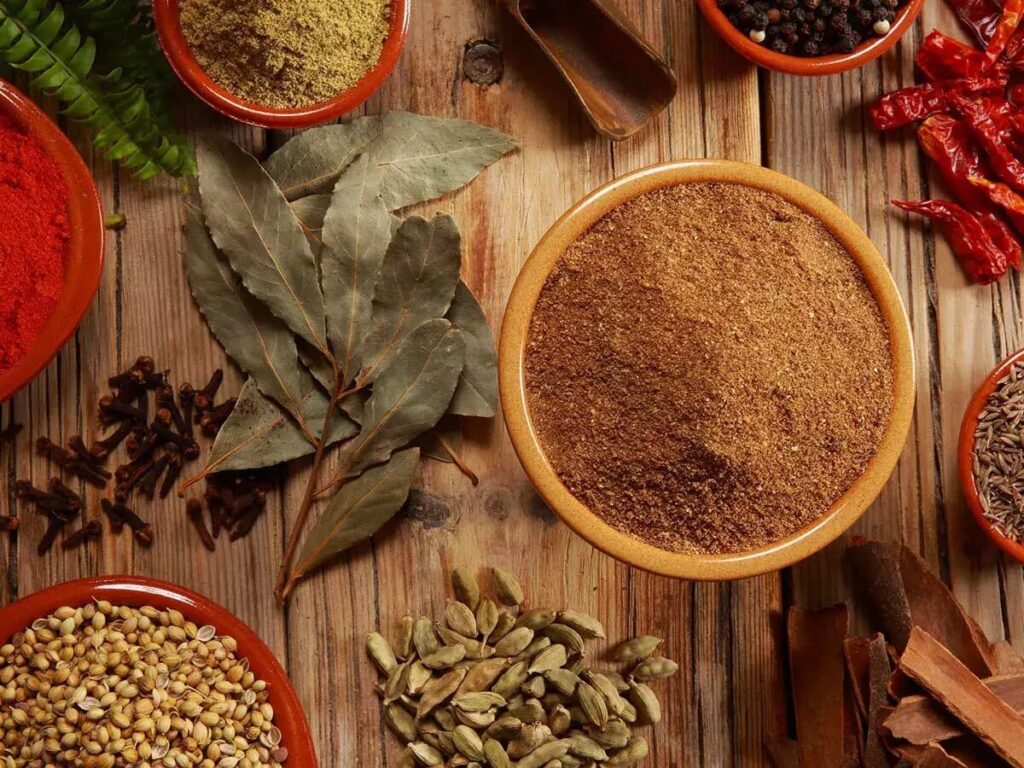Garam Masala – The Heart of Indian Flavors
Garam masala is not just a spice blend; it’s the very soul of Indian cooking. Used across various regions and countless dishes, this aromatic mix is a symbol of the country’s diverse and flavorful culinary heritage. The name garam masala literally translates to “hot spice mix” in Hindi – not hot in terms of spiciness, but for its warming properties that heat the body according to Ayurvedic principles.
Garam masala is a blend of ground spices, typically including cinnamon, cloves, cardamom, cumin, coriander, black pepper, and nutmeg. However, the exact composition can vary from region to region and even from one household to another. Some recipes may include bay leaves, fennel seeds, star anise, or dried chilies, depending on regional preferences and culinary traditions.
Each ingredient is dry-roasted to release its essential oils, then ground into a fine powder to form a rich, warm, and slightly sweet spice mix.

The Origins of Garam-Masala
The origins of garam masala can be traced back centuries to North India, where it was created as a warming spice mix to suit colder climates. Over time, it spread across the subcontinent, with each region adapting the blend to its local ingredients and tastes.
Its formulation is also influenced by Ayurvedic teachings, which suggest that garam masala increases the body’s internal heat and metabolism, making it a balancing and beneficial addition to meals.
Health Benefits of Garam-Masala
Beyond flavor, garam masala offers several health benefits:
- Boosts Digestion: Many of its ingredients like cumin and coriander aid digestion and reduce bloating.
- Anti-inflammatory Properties: Cloves and cinnamon have natural anti-inflammatory compounds.
- Rich in Antioxidants: Spices like cardamom and black pepper are loaded with antioxidants.
- Improves Metabolism: The warming nature of garam masala helps stimulate metabolism.
In Ayurveda, it’s believed to balance the body’s doshas and enhance the flow of energy.Culinary Uses of Garam Masala
Garam masala is incredibly versatile and used in a wide range of dishes:
- Curries: Add it toward the end of cooking to enhance flavor.
- Soups & Stews: Sprinkle a bit to add warmth and depth.
- Marinades: Mix it with yogurt and lemon juice for a flavorful meat or paneer marinade.
- Vegetables: Sauté vegetables with a pinch of garam masala for a quick and flavorful side.
- Biryani & Pulao: Use it to elevate rice dishes with a rich, aromatic touch.
Unlike other spice mixes, garam masala is often added near the end of cooking to preserve its complex aroma.
Making Garam Masala at Home
Here’s a basic recipe you can try at home:
Ingredients:
- 2 tbsp coriander seeds
- 1 tbsp cumin seeds
- 1 tbsp black peppercorns
- 1 tsp cloves
- 4–5 green cardamom pods
- 2 black cardamom pods (optional)
- 1 small cinnamon stick
- 1 tsp fennel seeds
- A pinch of grated nutmeg
Instructions:
- Dry roast all the whole spices on low heat until fragrant (2–3 minutes).
- Allow them to cool, then grind into a fine powder.
- Store in an airtight container in a cool, dry place.
Thoughts By Top Kitchen Spices
“Start small, explore, and let your kitchen be the place where taste meets tradition and wellness.”
Conclusion
Indian cooking is built on layers of flavor — and at the center of it all are your spices. Whether you’re a seasoned cook or just starting your culinary journey, Kitchen King Spices and essential kitchen spices are your best friends in the kitchen.
Having these Top kitchen spices in your pantry will help you create delicious and aromatic dishes effortlessly. If you have any problems with our ideas or need guidance on how to use these spices effectively, feel free to comment below. You can also reach out to us through our contact section. Don’t forget to drop a comment below to cheer up!
Blog Written by Rajhans Digital
